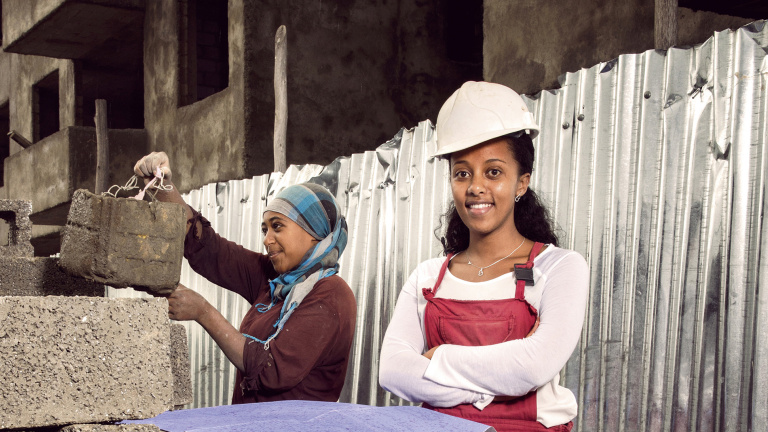
The multi-faceted dimensions of job creation for youth in fragile states - Editorial
Peaceful, stable, equitable, sustainable and prosperous development is a common ambition for all. But it seems even more pressing, and yet often more illusory in conflict-affected and fragile states. The complex environment in fragile countries means that there is no simple, let alone unique, solution towards sustainable peace and prosperity. Instead, it is more about intertwined processes and inter-connected factors.
With a rapidly growing population – more than half of this growth by 2050 expected to be in Africa – job creation is a top priority. Yet, there is no quick fix or simple recipe for providing increasing employment opportunities, in particular to an expanding youth work force, and even more so in fragile and conflict-prone contexts.
One dimension consists of seeking to improve the institutional and regulatory environment, build infrastructure and stimulate local and international productive investment. The World Bank Group, with its private arm the IFC, have been doing this for years and are tailoring the approach, based on their accumulated experience, to fit more vulnerable countries. So have some other development finance institutions (DFIs).
In Europe, the newly announced External Investment Plan (EIP) aims to harness development finance in fragile and conflict-affected countries, and in particular European DFIs and the European Investment Bank (EIB), to do exactly that. Combining the promotion of investment (including through new risk guarantee mechanisms), the provision of technical assistance, and support towards more conducive business and governance environment, the aim of the EIP is to foster development through decent work creation in more fragile countries in Africa and in the European neighbourhood. The G20 Compact for Africa, to be launched in the summer of 2017, and the recently announced German Marshall Plan with Africa, have similar ambitions to harness investment for infrastructure development and job creation in Africa.
By doing so, these initiatives intend to contribute to the necessary structural transformation of African countries, towards sustainable and inclusive industrialisation processes. The more immediate political drive, at least from a European perspective, is to address the so-called root causes of migration, based on the premises that conflicts and the absence of decent jobs, especially for youth, are major push factors to the recent immigration flows experienced in Europe from neighbourhood and sub-Saharan African countries. While such initiatives are unlikely to have a short-term effect on migration flows, the objective of contributing towards sustainable economic transformation and improved governance frameworks are, of course, welcomed.
However, operating in fragile contexts requires the integration of many other dimensions as well, including specific ones targeted at conflict-affected countries, and youth. One general characteristic is the dominance of the informal sector and the weak institutional setting. To secure their livelihood, young people tend to perform not one single professional activity, but a range of activities, combining formal and informal ones, rather than a fixed, full-time, well identified job position. In these conditions, the notion of employment itself becomes more vague and flexible. Ignoring this reality is self-defeating. Job promotion and skill training must therefore accommodate this variety and inherent vulnerability, focusing on developing a range of skills rather than specific tasks or professional training, and responding to the flexible and demanding schedules of young people.
Besides, some conflict-affected countries face challenges for re-integrating former combatants, mainly (male) youths, that can easily be recruited to violent activities and become a potential source of further instability. Providing employment opportunities for ex-combatants without discriminating or segregating them from other categories of the population is a key challenge.
Many other dimensions also have to be considered, including rural-urban dynamics with rapid urbanisation, while many sustainable employment opportunities can be further enhanced in agriculture, along value chains and sustainable food systems. In conflict-affected settings, moreover, there is peacebuilding potential in adopting a conflict sensitive approach to value chain development and integrating specific attention for youths therein. The gender dimension is also central in promoting jobs for peace and prosperity.
This issue of GREAT Insights brings together a range of perspectives on the pressing question of how better to promote youth employment in fragile and conflict-affected countries. As always, we hope you will enjoy them and we welcome your comments and suggestions.
Read the full magazine issue





